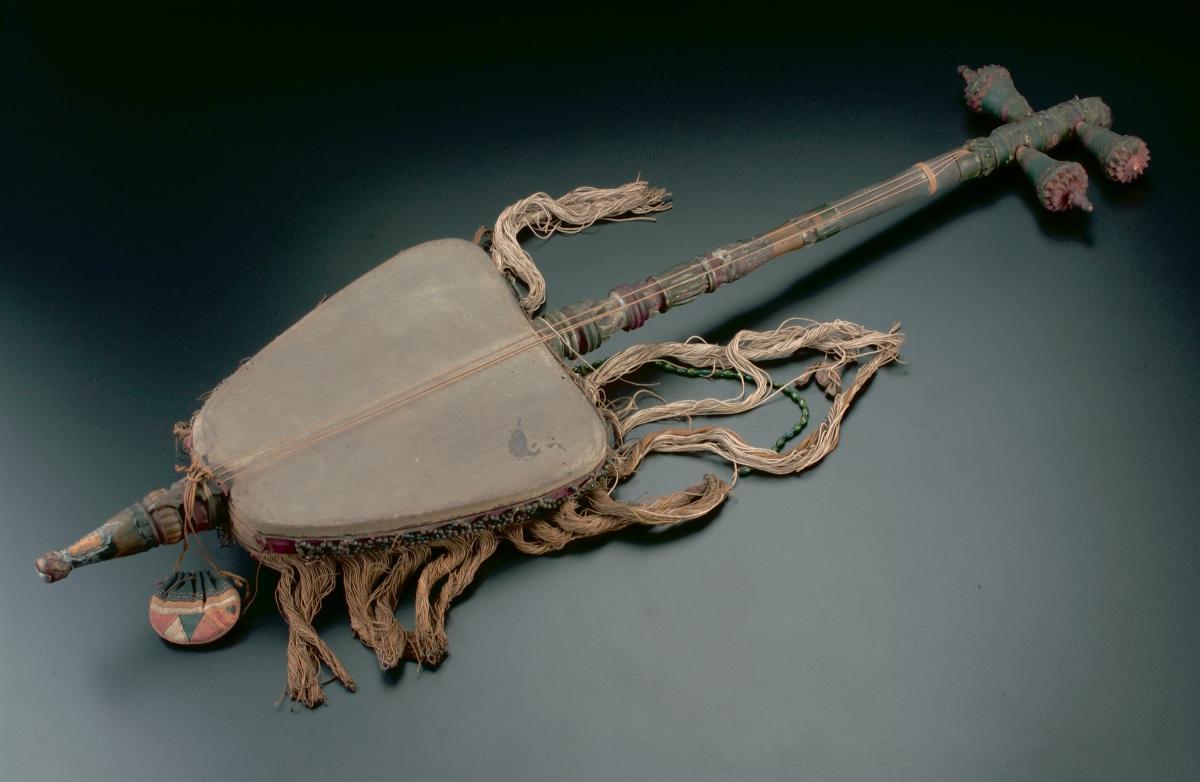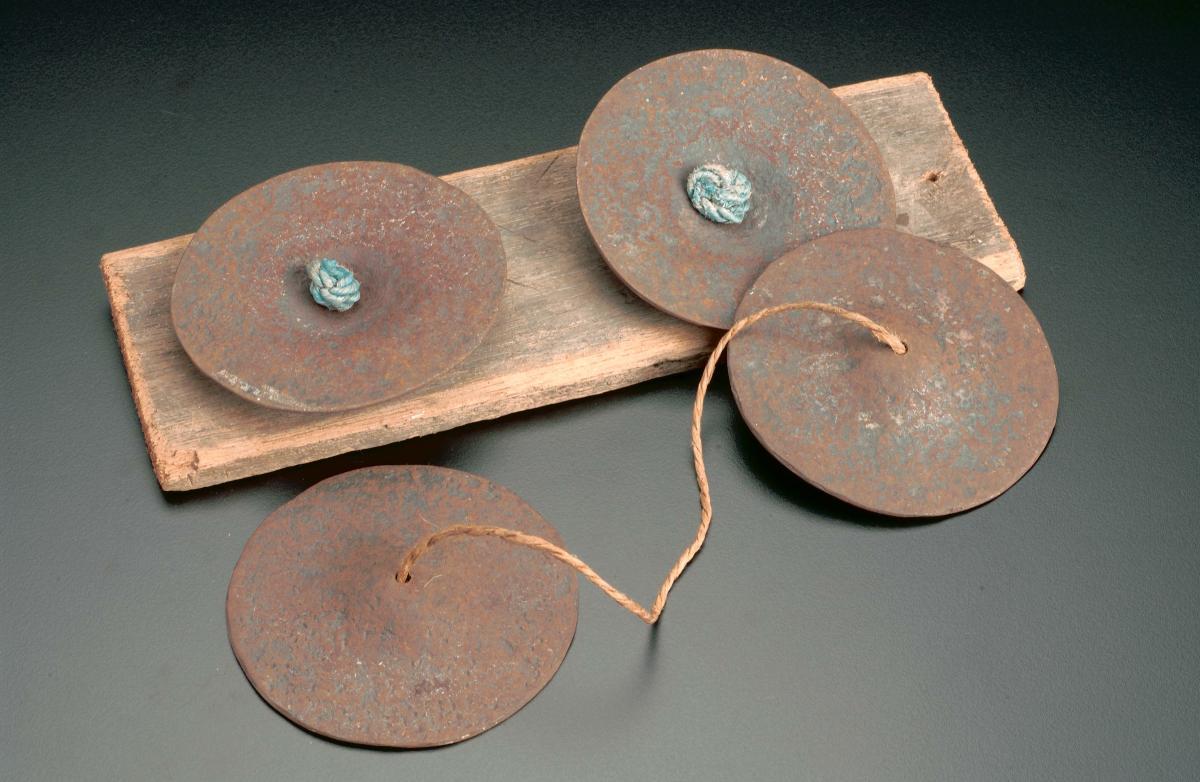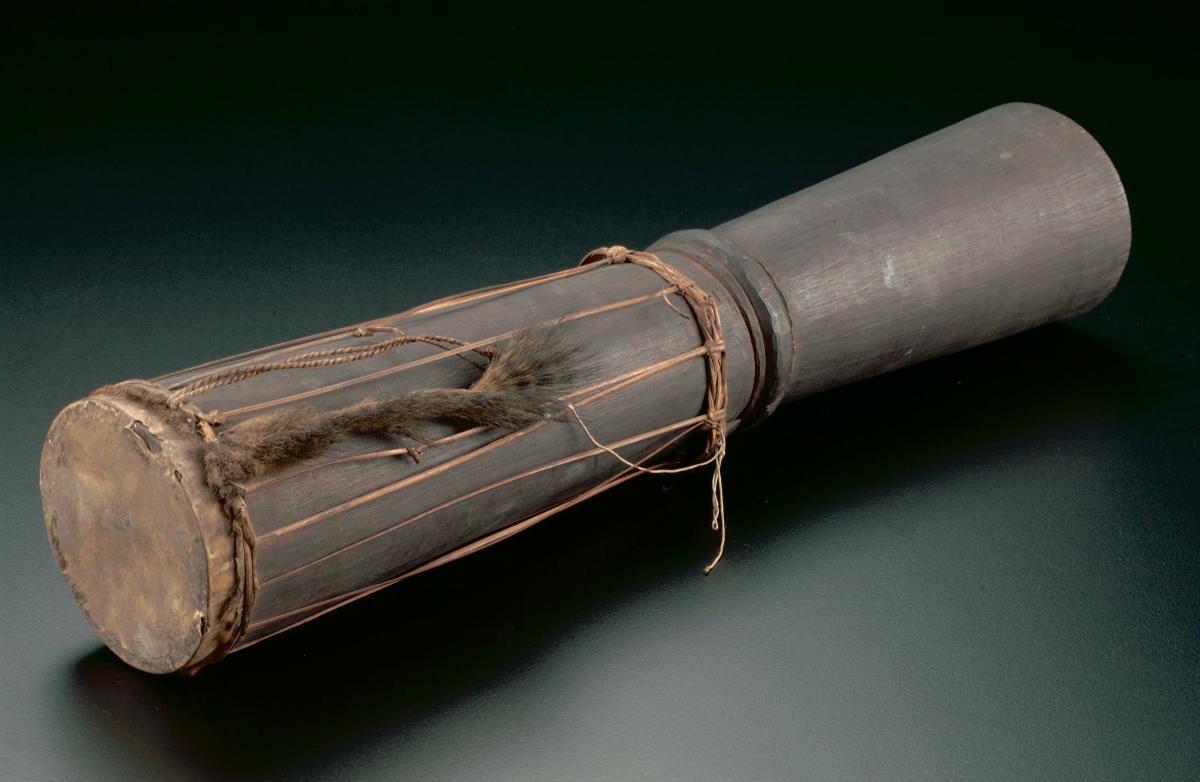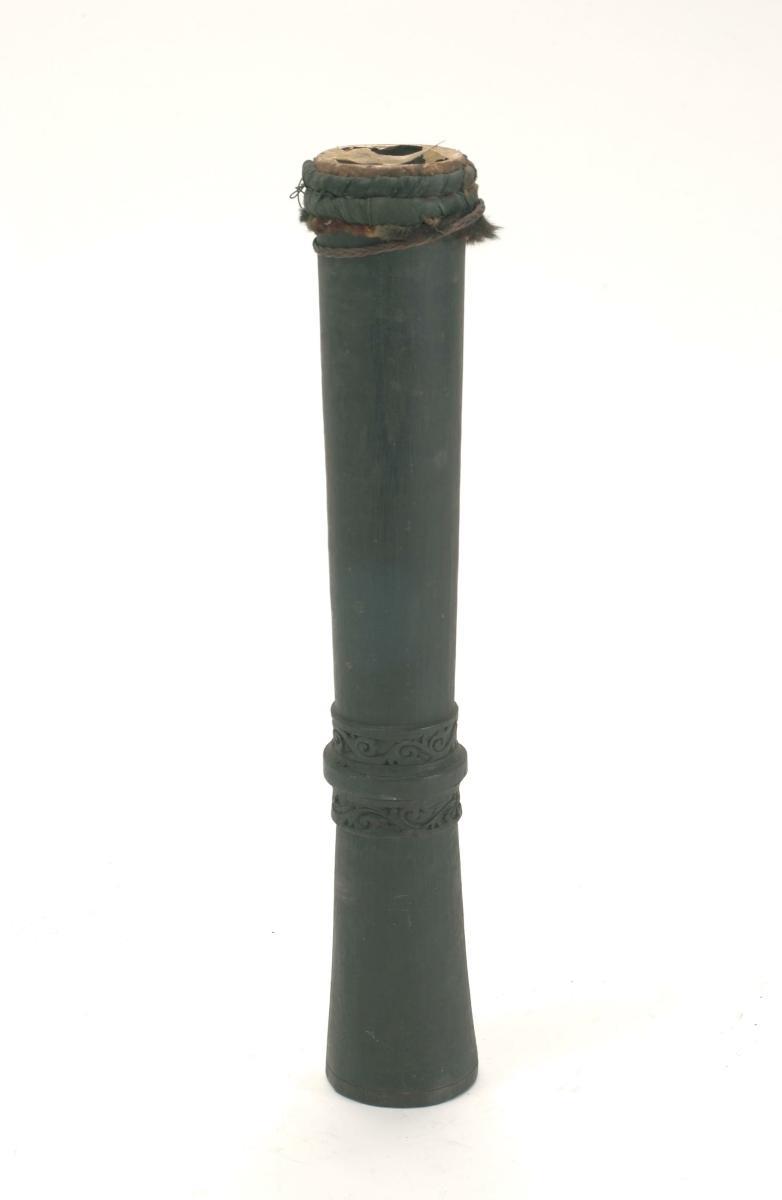This fiddle is carved and decorated with green, red and yellow powder pigments. The head of the shaft is missing. There are three transverse tuning pegs on the top. The body is hollowed out of a piece of hardwood. The sides are dressed with a piece of cloth which has beads and strings of pearls. The face is covered with a sheet of skin.Traditional music in Malaysia is associated with traditional theatre forms such as, 'kuda kepang' (horse trance dance), 'gendang kling' (instrumental ensemble), among other forms of entertainment. This type of music is based on either the 5-tone or 7-tone scales. It is performed mainly by percussion-dominated ensembles which include combinations of wind instruments such as the 'serunai' besar (big end blown trumpet) like this example, 'seruling' (end-blown ring flute); drum-sounds such as the 'gendang' (barrel shaped drums), 'geduk' (cylindrical drums), 'gedombak' (goblet drums), 'rebana', 'kompang', 'tar' (half frame drums) and 'jidor' (cylindrical) drums, percussion instruments such as gong, 'kesi' (finger cymbals), 'canang' (pair of small knobbed gongs), 'saron' (metal xylophone), 'kenong' (large knobbed gongs), 'gambang kayu' (wooden xylophone), 'bonang' (knobbed gongs), etc, and string instruments such as the 'rebab' (three-stringed spiked fiddle) like this example. The basic element in the traditional music is the gendang or drum, of which there are 14 types, four of which are beaten without the accompaniment of any other musical instrument. These are the 'rebana besar', 'rebana ubi' (big drums), kompang and tar.















